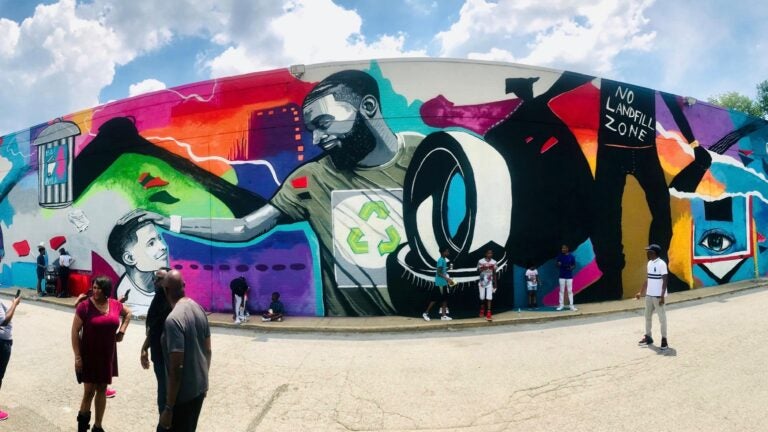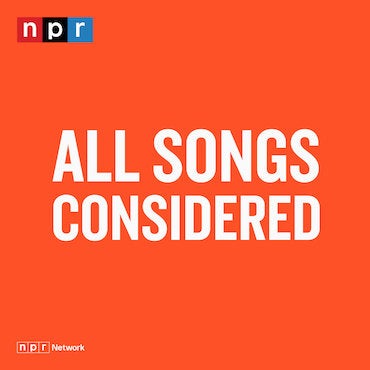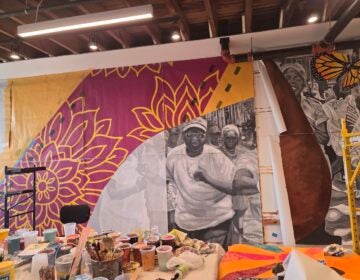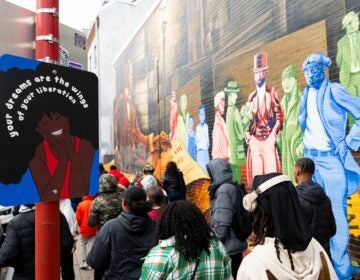Mural Arts goes beyond Philadelphia for environmental justice
The Mural Arts Institute will bring the organization’s Philly model of public engagement to three more cities, the second round to be selected.
Listen 1:32
Mural Arts Institute worked with Memphis-based artist Jamond Bullock to make a large-scale mural promoting litter cleanup in Frayser, the neighborhood he grew up in. (Mural Arts Institute)
The Mural Arts Institute — an arm of Mural Arts Philadelphia — will be going into three more cities to create public art projects. The institute will collaborate with grassroots organizations in Austin, Texas; Santa Fe, New Mexico; and Kern County, California.
This is the second round of cities selected to benefit from the community engagement model of public art that Mural Arts Philadelphia has been developing for over 35 years, resulting in more than 3,000 murals in Philadelphia. Since its creation in 2017, the institute has been involved with public art projects in Detroit, Akron, Ohio, and Memphis, Tennessee.
Mural Arts Institute offers select organizations in other cities some funding to develop public art projects, as well as training and general assistance in various processes of public engagement.
“They’ll be learning different models we use that maybe they can use, things they can test out on the ground or adapt to their specific needs,” said institute director Netanel Portier. “They’ll learn from things we were successful at, and things that were not as successful but we learned a lot from.”
Though Mural Arts Philadelphia has addressed many social issues in the work it has been doing here, the focus of the institute’s efforts in other cities is specifically on environmental justice, including how climate change and city planning can put people of color and low-income neighborhoods disproportionately at risk from environmental damage.
In Texas, the institute will be working with organizations in East Austin, a section of the city that is predominantly Mexican American and African American and that is also where most of the city’s industrial pollution occurs, from sources such as power plants and fuel storage. Historic redlining zoning practices pushed communities of color into those toxic areas.
The institute will be working with Raasin in the Sun, a community beautification program created by Olympic track runner Raasin McIntosh, who is from East Austin, that aspires to “inspire, unite, and restore communities.” Another partner is the East Austin Environmental Initiative, a program of the city government working with activists to address environmental concerns in that part of Austin.
What exactly will result from this collaboration is to be determined. The Mural Arts Institute does not dictate the end result, but rather helps teams with the process of public engagement and the development of a creative project.
“You don’t go into it and say, ‘We’re going to make a mural!’ but start with the issues and the creativity and build on that and see where it leads,” said institute director Portier. “It’s more than the mural. It’s the process that brings everyone together around that mural creation.”
In Santa Fe, the institute will be working with Three Sisters Collective, a Native American matriarchal activist group started in 2017 to promote multiculturalism. Most recently, it successfully pushed to have the city remove public monuments of historic European colonizers. The group wants to address social and environmental damage done to former and current Native American land by overgrazing, mining, water pollution, and nuclear waste storage.
In California, the institute will work with a team of environmental justice organizations working in Kern County, the region around the city of Bakersfield, where historically lower-income and immigrant communities have suffered the most from the effects of large-scale oil production and industrial agriculture.
Portier said the institute reviewed 25 applicants from around the country, narrowing it down to these three to receive assistance toward public art projects. Normally, the selection process involves site visits, but because of the coronavirus pandemic, all interaction with potential partners had to be done via Zoom.
Working with grassroots organizations to develop public engagement art projects usually involves being physically present in those communities. The COVID-19 pandemic makes that impossible right now, so preliminary work will be done remotely. Portier hopes to have boots on the ground in a year.
“Right now, we are in the process of getting to know each other,” Portier said. “Instead of a condensed three or four days on the ground, we’ll be spending multiple weeks in conversation and doing activities together virtually to get to know each other.”
“We’re confident the way we’ve adapted our style of engagement, through Zoom, that this work can still be successful and meaningful,” she said.

Get daily updates from WHYY News!
WHYY is your source for fact-based, in-depth journalism and information. As a nonprofit organization, we rely on financial support from readers like you. Please give today.





